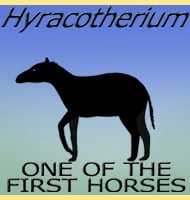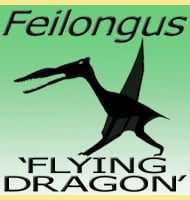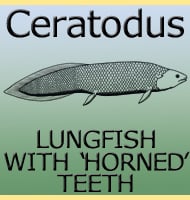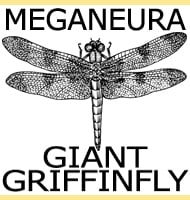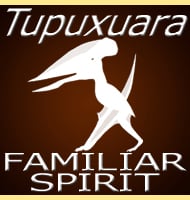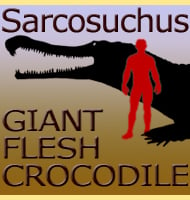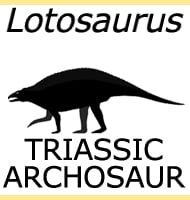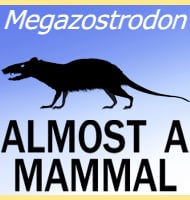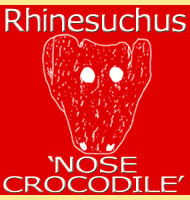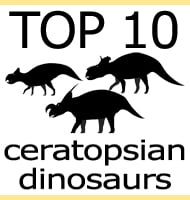
Ceratopsians were herbivorous dinosaurs known for their distinctive horns and bony frills.
They roamed the Earth during the Late Cretaceous period, approximately 70 to 66 million years ago.
With their robust bodies and powerful jaws, they often formed herds to protect themselves from large predators.
You might be curious about what threatened these rhino-like dinosaurs. (My Son Was)
Their main concern was the tyrannosaurids, including Tyrannosaurus rex, Gorgosaurus, and Daspletosaurus.
These formidable hunters had the upper hand against the relatively smaller Ceratopsians.
We begin with a list of ten Ceratopsians, which we will expand in the future.
10 - Einiosaurus
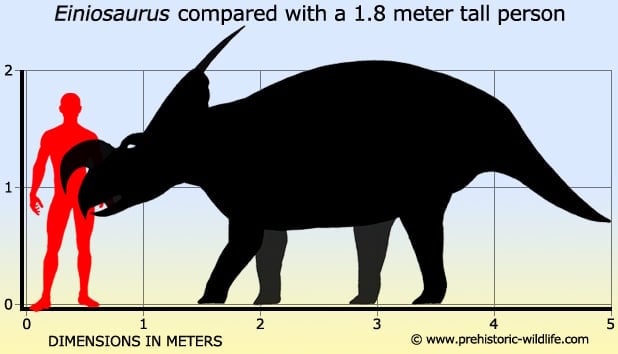
Einiosaurus has rapidly become one of the more popular ceratopsian dinosaurs thanks mostly to the unusual nasal horn that curves around like a can opener.
How the horn grew though is also interesting. In hatchlings the horn would have been a small upwards facing point, and then as juveniles grew the horn would not only increase in length, but would also begin to curve forwards.
In the most mature individuals, the horn would curl almost right round upon itself into the distinctive can opener shape.
9 - Centrosaurus
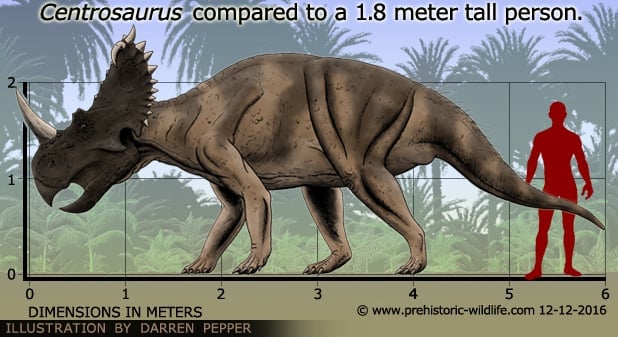
Centrosaurus is the type genus of the Centrosaurinae, a group of large quadrupedal ceratopsians that are noted for their extensive spiky growths, but reduced neck frills.
Centrosaurine ceratopsians like Centrosaurus are noted for being more common earlier in the late Cretaceous around the early Campanian.
Fossil beds of many hundreds of individuals of the same genus, including Centrosaurus also indicates that centrosaurines gathered in vast herds.
8 - Chasmosaurus
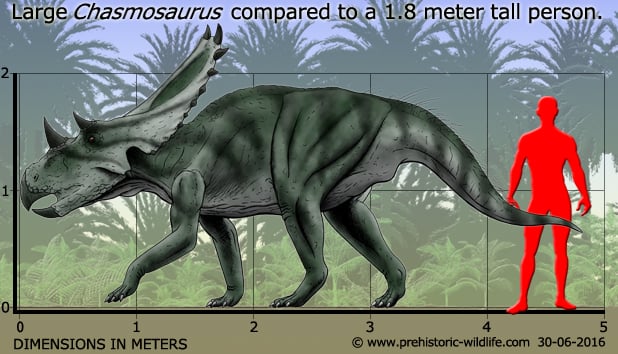
The main group of ceratopsian dinosaurs that are separate from the centrosaurines are the chasmosaurines, of which Chasmosaurus is the type genus.
Chasmosaurus and relative genera are noted for having less elaborate horn displays than centrosaurines, but at the same time they had far larger and more elaborate neck frills.
Modern interpretations of the horns and neck frills are that they were for display, and since chasmosaurines became more common during the Late Campanian and proceeding Maastrichtian, it seems that ceratopsians began to favour larger crests over horns.
7 - Pachyrhinosaurus
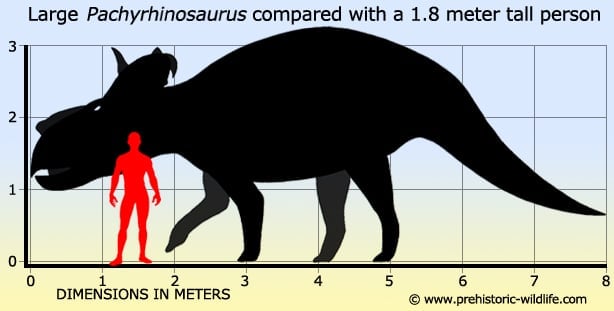
Not all horned ceratopsians had spiky growths on their nose, and Pachyrhinosaurus is proof of this. Instead of a spiky horn, Pachyrhinosaurus had a clumpy growth instead.
Pachyrhinosaurus lived during the later stages of the Cretaceous, after and during relative genera were still sporting horns.
This is against the old notion that the horns of ceratopsian dinosaurs were weapons for defence, as if this were the case, why did genera like Pachyrhinosaurus lose them?
Instead it seems that the crest and horns (or even growths) of ceratopsians were for display.
6 - Zuniceratops
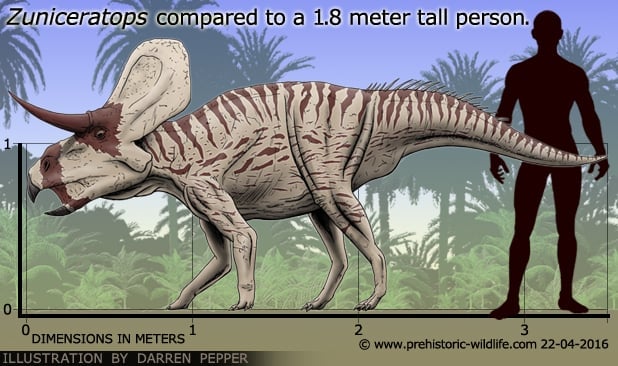
Zuniceratops makes the list for being the earliest occurrence of a horned ceratopsian in North America.
This has raised fresh questions over whether horned ceratopsians evolved in North America or Asia first, though while we might have an idea, in all likelihood the early horned ceratopsians probably radiated out across both continents and back again several times.
Zuniceratops was named in honour of the Zuni tribe.
5 - Achelousaurus
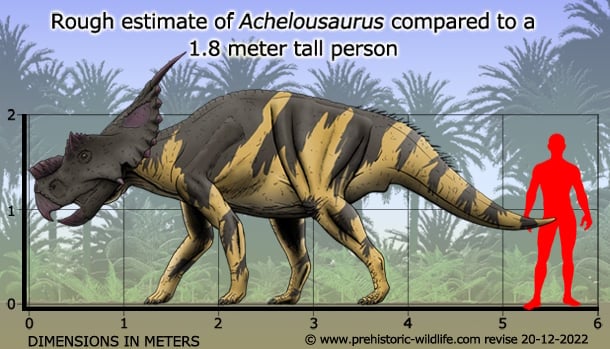
Achelousaurus is an interesting genus as it seems to represent a transitional form linking genera like Einiosaurus with genera like Pachyrhinosaurus.
This has helped portray a line with Einiosaurus known from the Campanian stage, and Pachyrhinosaurus known from roughly the late Campanian/early Maastrichtian, it would seem that as the horns of genera like Einiosaurus curved over they eventually formed the large mass on the snouts of genera like Pachyrhinosaurus.
This is yet a further indication that the horns of ceratopsian dinosaurs were less for defence and more for display.
4 - Psittacosaurus
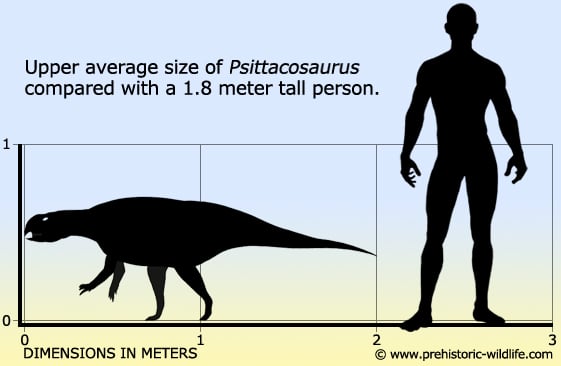
Out of all the dinosaurs on this list, Psittacosaurus is the one that looks least like the classic depiction of a ceratopsian that would spring into the minds of most people, yet paradoxically it is a genus that has made some of the largest contributions to our understanding of ceratopsians.
Psittacosaurus lived in the early Cretaceous long before the appearance of the larger ceratopsians that were among the dominant fauna of the later Cretaceous.
Psittacosaurus is known from several hundred individuals, many of which are complete.
Some Psittacosaurus even had a row of long feather quills that ran down their tail, and a juvenile found inside the stomach area of a Repenomamus is the first proof that some mammals ate dinosaurs!
On an additional note, as of early 2014, Psittacosaurus has the largest number of confirmed species out of any other dinosaur genus.
3 - Protoceratops
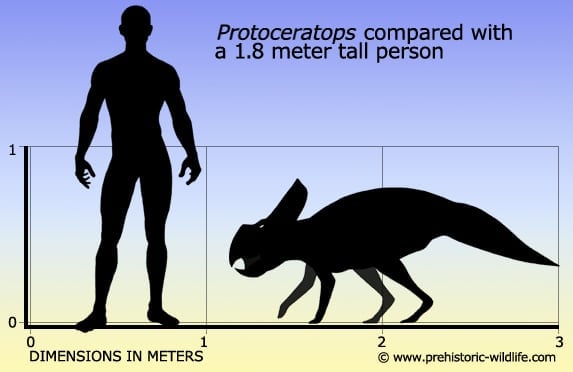
Protoceratops means first horned face, a reference to the primitive looking hornless skull that Protoceratops has become well known for.
The truth of the matter though is that Protoceratops lived towards the end of the Cretaceous period, many tens of millions of years after more likely ancestors such as the previously mentioned Psittacosaurus.
Unfortunately there are still people who take the name too literally and make false claims about Protoceratops being the first ceratopsian dinosaur.
Protoceratops is best described as a late surviving form of the ceratopsians that was around before the appearance of horned forms such as the previously mentioned Zuniceratops.
Protoceratops probably retained its primitive form because it had no requirement to evolve into a different one.
Fossil evidence shows that Protoceratops had an antagonistic relationship with the famous dromaeosaurid dinosaur Velociraptor.
The specimen known as the ‘fighting dinosaurs’ shows a Velociraptor and a Protoceratops, which has the arm of the Velociraptor in its mouth locked in a death struggle when they were believed to have been buried by a sudden landslide.
Also the oviraptorid Oviraptor was so named when the type specimen was believed to have been raiding a Protoceratops nest, though later it turned out that the nest actually belonged to the Oviraptor.
2 - Styracosaurus
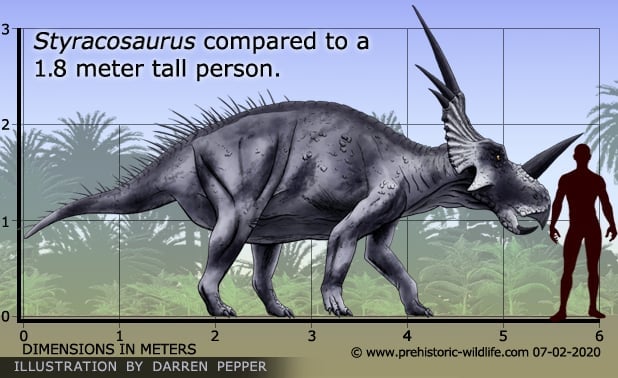
Easily one of the more popular ceratopsian dinosaurs that has been appearing in popular science and fiction for over a hundred years now, Styracosaurus is one of the best known of the type of ceratopsians that are classed as centrosaurines.
Styracosaurus was on the larger end of a mid-sized ceratopsian, though in the past it has often been depicted as being much larger than it actually was, particularly in films.
Like with some other centrosaurine genera, vast bone beds in North America indicate that Styracosaurus would congregate in large herds of several hundred, perhaps several thousand individuals.
1 - Triceratops
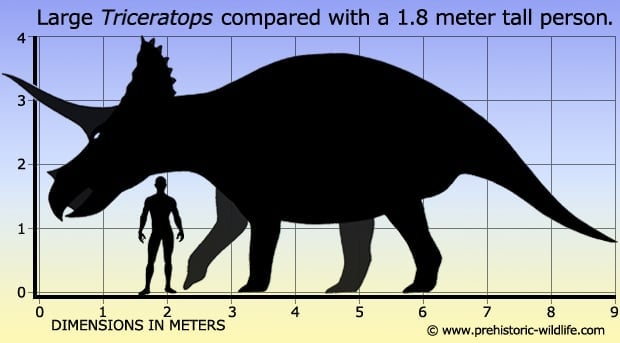
For most people this is ‘the’ ceratopsian dinosaur of choice, and the one that is by far the most popular of them all.
Triceratops had three large horns (hence the name Triceratops which means ‘three horned face’), a robust neck frill, and a larger than average size, all things that have confirmed its place in popular culture.
Triceratops has often been shown in opposition against large predatory dinosaurs such as tyrannosaurs, usually charging at them like a rhino.
However the skull of Triceratops has been proven to be incapable of withstanding the stresses that impacts from charging would inflict.
Also while there is fossil evidence that shows tyrannosaur tooth marks on Triceratops fossils, no tyrannosaurs have been proven to have been hurt by Triceratops.
With that said, tyrannosaurs did have other kinds of dinosaurs to target such as hadrosaurs that would have been far easier prey than ceratopsians.
Some Triceratops crests show damage that some palaeontologists have interpreted as being caused by the horns of other Triceratops.
It has been considered that rather than charging at predators, Triceratops may have used their horns on each other in duelling contests in order to assert dominance over rivals that could not be intimidated by just a visual display.
Triceratops would have lived alongside other types of ceratopsian dinosaurs, though not the previously mentioned Styracosaurus as it is often depicted since this genus lived much earlier in Campanian stage of the Cretaceous, whereas Triceratops is late Maastrichtian.
In 2010 it was claimed that another genus of ceratopsian named Torosaurus was not only a synonym to Triceratops, but actually represented the true adult form.
Torosaurus is noted for having a very similar body and horn arrangement to Triceratops, but a much larger neck frill with openings, whereas the frill on known Triceratops is relatively short and solid.
Others have not been convinced however noting that a lack of known Torosaurus individuals at different ages makes a comparison to Triceratops difficult to establish.
Differences in the skulls of Triceratops and Torosaurus are also pointed out, as well as to date there is no known occurrence of holes appearing in frills of adult ceratopsians when subadults and even juveniles do not have them (holes in the frill usually start developing very early on in life).
Either Triceratops and Torosaurus are indeed separate, or Triceratops would be the first known ceratopsian where frill holes suddenly appear upon adulthood.

